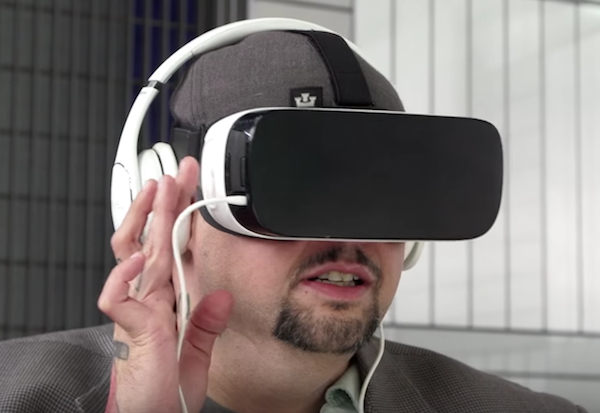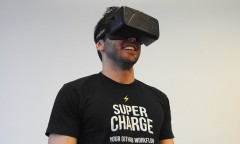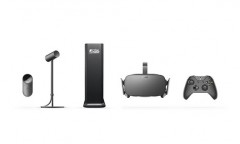By Vishal Goel, | December 18, 2016

Samsung's mobile virtual reality headset Gear VR now supports the "Parties and Rooms" feature. (YouTube)
Samsung's mobile virtual reality headset Gear VR has received Oculus' new social VR features that allow users to interact with other people via a virtual avatar while mimicking real head and mouth movements.
A few months ago, Oculus announced a couple of social VR features known simply as "Parties and Rooms." While "Parties" is basically built-in voice chat, "Rooms" is a virtual hangout space. Together, Parties and Rooms allow users not just to play VR games but to connect people around the world virtually.
Like Us on Facebook
Once a user puts on the headset and launches the Oculus Home screen, the Parties interface appears on the right. It looks very much like any other social-chat app; one can see a list of his/her friends and who is online. One can also see the title of the game they're playing, if any. To start chatting, one has to tap the Party tab, choose who to add and then hit "Start a Party."
"Think of it like a phone call," said Madhu Muthukumar, a product manager for Oculus.
While Parties is like making a phone call, Rooms is like inviting one's buddies over. Once the Party is all set up, one can also "see" and interact with his/her friends instead of just hearing their voices, by simply joining a Room right from the Parties interface. The virtual Room is separated into a few different areas. One can change the appearance of his/her avatars in one room and another, users can watch videos together. The tabletop area is where users can play simple board or card games, and there's yet another space dedicated to just sitting around and chatting. Each avatar has a floating tablet nearby, which essentially acts as the respective user's controls.
The most interesting thing is that virtual avatars move around as users speak. Their mouths move in sync to what they say, their movement mimics what the user does with his/her head. Similarly, the mouth movement is synced to the sound the software picks up from the microphone.
-
Use of Coronavirus Pandemic Drones Raises Privacy Concerns: Drones Spread Fear, Local Officials Say

-
Coronavirus Hampers The Delivery Of Lockheed Martin F-35 Stealth Fighters For 2020

-
Instagram Speeds Up Plans to Add Account Memorialization Feature Due to COVID-19 Deaths

-
NASA: Perseverance Plans to Bring 'Mars Rock' to Earth in 2031

-
600 Dead And 3,000 In The Hospital as Iranians Believed Drinking High-Concentrations of Alcohol Can Cure The Coronavirus

-
600 Dead And 3,000 In The Hospital as Iranians Believed Drinking High-Concentrations of Alcohol Can Cure The Coronavirus

-
COVID-19: Doctors, Nurses Use Virtual Reality to Learn New Skills in Treating Coronavirus Patients











